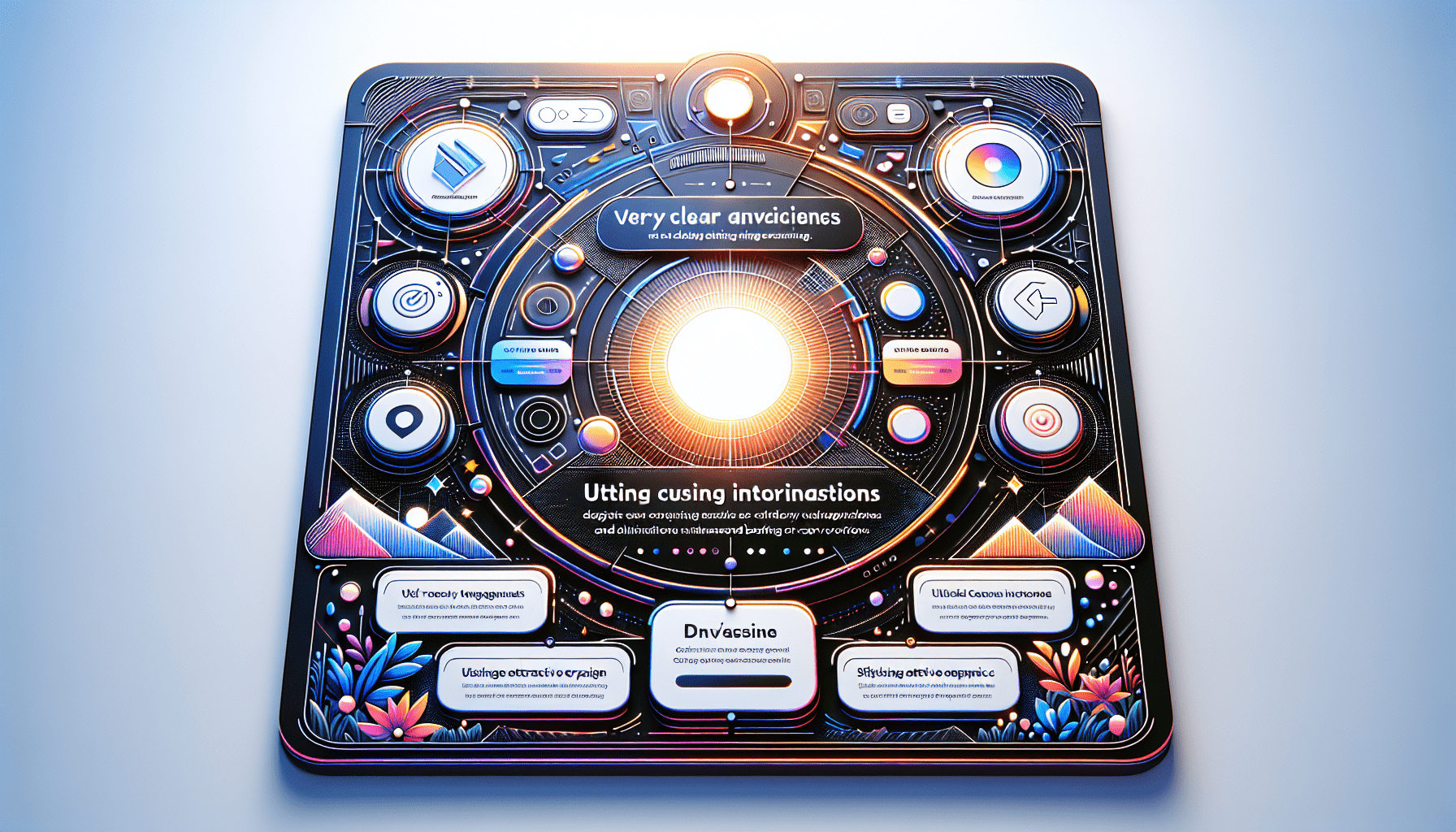How can you improve conversion rates by leveraging user experience design?
Are you looking to increase conversion rates on your website or app? You may want to consider using user experience design to make improvements. By focusing on the user’s experience, you can create a more engaging and user-friendly interface that will ultimately lead to more conversions. In this article, we will discuss how you can leverage user experience design to improve conversion rates and drive business growth.

Understanding User Experience Design
User experience design, also known as UX design, is the process of designing digital products that are intuitive, user-friendly, and enjoyable to use. It involves understanding a user’s needs, preferences, and behaviors in order to create a positive experience. By designing products with the user in mind, you can improve usability, accessibility, and satisfaction.
User experience design encompasses a variety of disciplines, including user research, interaction design, information architecture, and visual design. It involves creating wireframes, prototypes, and mockups to test and iterate on design solutions. Ultimately, the goal of user experience design is to create products that meet the needs of users while achieving business goals.
Making User Experience a Priority
When it comes to improving conversion rates, user experience should be a top priority. A positive user experience can lead to higher engagement, increased trust, and ultimately more conversions. By focusing on user needs and designing with empathy, you can create a more intuitive and user-friendly interface that will encourage users to take the desired action.
Think about the last time you visited a website that was difficult to navigate or a mobile app that was confusing to use. Chances are, you quickly became frustrated and abandoned the site or app. By prioritizing user experience design, you can create a seamless and enjoyable experience for your users, which will ultimately lead to higher conversion rates.
Utilizing Data and Analytics
One of the key components of user experience design is data and analytics. By collecting and analyzing data on user behavior, interactions, and preferences, you can gain valuable insights into how users are interacting with your product. This data can help you identify pain points, areas for improvement, and opportunities to optimize the user experience for better conversion rates.
Tools like Google Analytics, Hotjar, and Crazy Egg can provide valuable data on user behavior, traffic sources, conversion rates, and more. By leveraging data and analytics, you can make informed decisions about how to improve the user experience and drive conversions. For example, you may discover that a particular page on your website has a high bounce rate, indicating that users are not finding the information they need. By analyzing the data, you can make changes to the page layout, content, or navigation to improve the user experience and encourage conversions.
Implementing User-Centered Design Principles
User-centered design is a key principle of user experience design. It involves designing products and services with the user in mind, taking into account their needs, preferences, and goals. By focusing on the user, you can create more intuitive and user-friendly interfaces that will ultimately lead to higher conversion rates.
Conducting User Research
User research is an essential component of user-centered design. By conducting user research, you can gain a deeper understanding of your target audience, their needs, preferences, and behaviors. This research can help you identify pain points, opportunities for improvement, and areas where you can optimize the user experience for better conversion rates.
There are a variety of methods you can use to conduct user research, including surveys, interviews, usability testing, and analytics. By collecting feedback from real users, you can gain valuable insights into how they interact with your product and where there are opportunities to improve the user experience. For example, you may discover that users are having difficulty finding the checkout button on your e-commerce website. By conducting usability testing, you can identify the problem areas and make changes to improve the user experience and drive conversions.
Creating User Personas
User personas are fictional representations of your target audience based on research and data. By creating user personas, you can better understand the needs, preferences, and behaviors of your users and design products that meet their needs. User personas can help you make more informed design decisions, prioritize features, and create a more personalized and engaging user experience.
When creating user personas, consider factors such as demographics, behaviors, goals, and pain points. By developing detailed user personas, you can create more targeted and effective design solutions that will resonate with your target audience. For example, if you are designing a fitness app for millennials, you may create a user persona named Sarah, a 25-year-old fitness enthusiast who enjoys yoga, running, and weightlifting. By designing with Sarah in mind, you can create a more tailored and engaging user experience that will ultimately lead to higher conversion rates.
Optimizing User Interface Design
User interface design is another important aspect of user experience design. It involves designing the visual appearance and interactive elements of a digital product, such as buttons, forms, navigation menus, and images. By optimizing the user interface design, you can create a more visually appealing and user-friendly interface that will ultimately lead to higher conversion rates.
Simplifying Navigation
Navigation is a critical component of user interface design. By simplifying navigation and making it easy for users to find the information they need, you can create a more seamless and intuitive user experience. Consider organizing your content into logical categories, using clear labels and descriptive headings, and providing easy access to important pages and features.
For example, if you are designing an e-commerce website, you may create a top navigation menu with categories such as Home, Shop, About Us, and Contact. You may also include a search bar, filters, and sorting options to help users find products quickly and easily. By simplifying navigation and making it easy for users to find what they are looking for, you can create a more user-friendly interface that will encourage conversions.
Designing Clear Call-to-Actions
Call-to-actions (CTAs) are an essential part of user interface design. CTAs are buttons, links, or messages that prompt users to take a specific action, such as signing up for a newsletter, making a purchase, or downloading a whitepaper. By designing clear and compelling CTAs, you can guide users through the conversion funnel and encourage them to take the desired action.
When designing CTAs, consider factors such as placement, size, color, and wording. Place CTAs prominently on the page where they are easily visible and accessible to users. Use contrasting colors to make CTAs stand out from the rest of the page and use action-oriented language to prompt users to take action. For example, instead of using a generic button label like “Submit,” you may use a more compelling label like “Get Started Now” to create a sense of urgency and encourage conversions.
Conducting Usability Testing
Usability testing is an important part of the user experience design process. By testing your product with real users, you can gain valuable feedback on how users interact with your product, identify pain points, and uncover opportunities for improvement. Usability testing can help you validate design decisions, optimize the user experience, and ultimately drive conversions.
Planning Usability Tests
When planning usability tests, it’s important to define clear goals and objectives for the testing session. Identify the key tasks you want users to complete, such as signing up for a free trial, adding a product to the cart, or searching for a specific piece of information. Consider factors such as the target audience, testing environment, and methodology for collecting feedback.
For example, you may conduct remote usability tests with participants from your target audience using a video conferencing tool. Provide participants with a series of tasks to complete while observing their interactions and collecting feedback. By planning usability tests effectively, you can gain valuable insights into how users interact with your product and where there are opportunities to improve the user experience for better conversion rates.
Analyzing Usability Test Results
After conducting usability tests, it’s important to analyze the results and identify patterns, trends, and insights that can inform design decisions. Look for common pain points, areas of confusion, and opportunities for improvement that will enhance the user experience and drive conversions. Consider compiling a list of actionable recommendations based on the test findings.
For example, you may discover that users are having difficulty completing the checkout process on your e-commerce website. By analyzing the usability test results, you may identify specific steps in the checkout flow that are causing friction for users, such as complex form fields or unclear error messages. By making changes to simplify the checkout process, you can create a more seamless and user-friendly experience that will encourage conversions.

Conclusion
In conclusion, leveraging user experience design is a powerful way to improve conversion rates and drive business growth. By focusing on the user’s experience, conducting user research, optimizing interface design, and conducting usability testing, you can create a more engaging and user-friendly interface that will ultimately lead to more conversions. Remember to prioritize user experience, make data-driven decisions, and continuously iterate on design solutions to create a positive and seamless experience for your users. By leveraging user experience design effectively, you can improve conversion rates, drive business growth, and achieve your goals.
